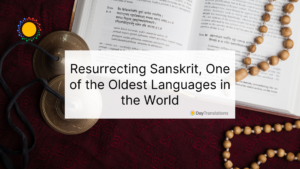Embarking on a journey to learn a new language can be an exciting and rewarding endeavor. The world is filled with a rich tapestry of diverse cultures and languages, and the desire to communicate with people from different backgrounds drives many to explore unfamiliar linguistic territories. However, for English speakers, some languages present more significant challenges than others. In this article, we will unveil the top 10 most difficult languages to learn for English speakers.
These languages demand perseverance, dedication, and a keen ear for pronunciation. From the intricate characters of Mandarin to the tonal complexities of Thai, each language on this list offers a unique set of hurdles to overcome. So, if you’re up for a linguistic challenge and seeking to expand your horizons, read on to discover the fascinating world of the most demanding languages to master.
What Makes a Language Difficult to Learn?
Before we dive into the list, let’s understand what makes a language particularly challenging for English speakers. The primary factor is the degree of dissimilarity from their native language. For English speakers, languages that employ non-Romanized alphabets present an immediate hurdle.
Additionally, limited opportunities to interact with native speakers and access to effective learning resources can further complicate the process. Adults often face a phenomenon called ‘fossilization,’ where progress plateaus, making language learning a daunting endeavor. Nonetheless, with dedication, it is far from impossible.
Why are the Most Difficult Languages to Learn so Challenging?
While all language learning is demanding, certain languages present significantly higher obstacles due to their unique grammar systems and learning hurdles. Factors like exposure, regional variations, and distinct scripts contribute to the difficulty level.
Without further ado, let’s explore the top 10 most challenging languages for English speakers to tackle!
Most Difficult Languages to Learn if a You’re Native English Speaker
#1- Mandarin
Mandarin Chinese, a tonal language with over a billion speakers, is a language that boasts cultural richness and global significance. However, delving into Mandarin Chinese can be daunting for English speakers. In fact, it’s one of the most difficult languages to learn for just about any native speaker of another language. One of the most formidable aspects is the writing system, which features thousands of intricate characters. Each character carries its own meaning and pronunciation, demanding considerable memorization.
Mandarin’s tonal nature adds an additional layer of complexity. Pronouncing the same syllable with different intonations can completely change the meaning of a word, making it crucial for learners to master the four distinct tones and the neutral tone.
Yet, despite the challenges, learning Mandarin Chinese can be immensely rewarding. As you progress, you’ll unlock doors to a vast array of literature, history, and culture and gain access to meaningful connections with native speakers worldwide.
#2 – Japanese
Japanese, spoken by over 128 million people, combines ancient traditions with modern innovations, making it a fascinating language to explore. For English speakers, the writing system poses significant difficulties. It uses three scripts: hiragana and katakana, which represent syllables, and kanji, which are borrowed Chinese characters representing meanings.
Mastering the intricate writing system is just the beginning. Japanese grammar and syntax differ significantly from English, requiring learners to adapt to a different way of constructing sentences.
Despite the challenges, Japanese culture, literature, and media allure draws many language enthusiasts. As you immerse yourself in this unique linguistic world, you’ll discover a profound appreciation for the beauty and depth of the language.
#3- Arabic
With its historical significance and cultural impact, the Arabic language stands as one of the world’s oldest languages. For English speakers, the Arabic script itself can be a significant barrier to overcome. Written from right to left, it demands a shift in visual processing, and the absence of vowels in the script can further complicate reading comprehension.
The rich linguistic diversity within the Arab world is another challenge. While Modern Standard Arabic is used in formal contexts and in the media, everyday interactions often involve regional dialects and a spoken language that can differ considerably from the standard form.
#4 – Mongolian
Mongolian, with its rich nomadic heritage and vibrant cultural traditions, is spoken by around 5 million people. The language has two scripts: traditional Mongolian script and the more commonly used Cyrillic script. While the Cyrillic alphabet may seem familiar to English speakers, delving into traditional Mongolian requires learning an entirely new set of characters.
Mongolian is known for its complex system of case endings, where words change their forms based on grammatical functions within a sentence. This feature and a unique pronunciation system can challenge learners seeking to master the language.
#5 – Finnish
Finnish, belonging to the Uralic language family, is known for its distinct vowel harmony system. This means that the vowels within a word must harmonize, adding a layer of complexity to pronunciation and word formation.
Finnish grammar differs significantly from English, involving agglutination, where affixes are added to the stem of a word to indicate various grammatical features. Despite its linguistic intricacies, Finnish offers a gateway to a unique cultural experience, allowing learners to appreciate the Finnish way of life and the nation’s enchanting landscapes.
#6 – Russian
With its immense geopolitical influence and rich literary tradition, the Russian language has a sizable community of over 260 million speakers. While sharing similarities with the English script, the Cyrillic alphabet features additional characters and sounds that require careful study, like many European languages.
With its distinctive stress patterns and rolling “r” sound, pronunciation can be particularly challenging for English speakers. Aside from the spoken language, Russian grammar involves six cases and complex verb conjugations, necessitating attention to detail in constructing sentences. Mastering Russian offers access to the works of renowned authors like Tolstoy and Dostoevsky, and the ability to engage in meaningful conversations with Russian speakers worldwide.
#7 – Thai
Thai, another tonal language spoken by over 60 million people, presents a fascinating linguistic journey with its unique script and tonal nature. Written in a graceful and elegant script, Thai requires learners to grasp a new writing system that doesn’t use spaces between words.
What makes Thai incredibly challenging is its tonal aspect, featuring five different tones that can drastically alter the meaning of words. Mastering the correct tones is crucial for effective communication. However, the rewards of learning Thai extend beyond language alone. Exploring Thai culture, cuisine, and traditions enriches the overall experience and creates lasting connections with native speakers.
#8 – Korean
Korean, with its dynamic pop culture, including K-pop and Korean dramas, has gained popularity worldwide. The modern alphabet, Hangeul, is lauded for its logical design and relative ease of learning individual characters.
However, combining characters to form syllable blocks and understanding Korean grammar can prove challenging for English speakers. The language follows a subject-object-verb sentence structure, a departure from the subject-verb-object arrangement in English. Despite the challenges and complex grammar rules, learning the challenging language that is Korean provides access to a vibrant and modern culture that continues to captivate people around the globe.
#9 – Greek
With its rich ancient history and influence on Western civilization, Greek attracts language enthusiasts seeking to explore its deep literary and philosophical heritage. However, the Greek alphabet, derived from the Phoenician script, is distinct and requires learners to acquaint themselves with new characters and sounds.
Greek also features a complex system of inflections, with words undergoing various changes to indicate grammatical functions, making accurate communication a rewarding yet challenging pursuit.
#10 – Tagalog
Tagalog, the national language of the Philippines, offers an exciting journey into the heart of Filipino culture. The Baybayin alphabet, once used historically, adds a touch of uniqueness to the language. Today, however, the Latin alphabet is commonly used for writing Tagalog.
One significant challenge for English speakers is understanding the absence of verb tenses in this widely spoken language. It’s also why it’s one of the most difficult languages to learn! Tagalog relies on context and markers to indicate time, requiring learners to adjust their mindset when forming sentences.
Ready to Tackle the Most Difficult Languages to Learn?
While these 10 languages undoubtedly present significant challenges for English speakers, the rewards of delving into diverse cultures and building meaningful connections with people worldwide make the journey truly fulfilling. So, if you’re ready to expand your linguistic repertoire and explore the wonders of the world’s most demanding languages, seize the opportunity and embark on this exciting adventure!














Sorry, the comment form is closed at this time.